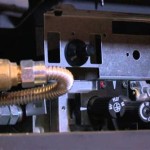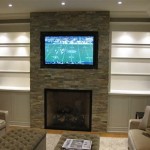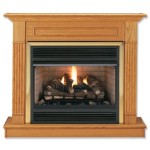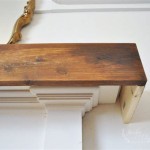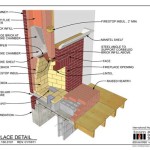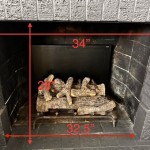How To Paint a Fireplace Insert Brass
Many fireplaces feature brass accents, often in the form of an insert, trim, or decorative elements. While brass can add a touch of elegance, it can also appear dated or clash with evolving interior design preferences. Painting a fireplace insert brass is a cost-effective alternative to replacing the entire unit. This process requires careful preparation, the selection of appropriate paint, and proper application techniques to achieve a durable and aesthetically pleasing finish. This article provides a comprehensive guide on how to paint a fireplace insert brass, covering essential steps and considerations for a successful project.
Key Point 1: Preparation and Safety Precautions
Prior to beginning the painting process, meticulous preparation is essential to ensure proper paint adhesion and a professional-looking outcome. This phase involves cleaning the brass surface, masking off surrounding areas, and understanding the safety precautions required to handle potentially hazardous materials. These steps are crucial for achieving a long-lasting and visually appealing result.
Safety First: Before handling any materials, safety is paramount. Work in a well-ventilated area to avoid inhaling fumes from cleaning agents and paint. Wear appropriate personal protective equipment (PPE), including gloves, eye protection, and a respirator mask. This will protect skin, eyes, and respiratory system from irritation and potential damage.
Disassembly (If Possible): If the brass insert is removable, carefully detach it from the fireplace. This will simplify the painting process and allow for more thorough cleaning and surface preparation. Consult the fireplace manufacturer's instructions or a qualified professional if unsure about disassembly procedures. If complete removal is not feasible, ensure ample workspace around the insert and proceed with masking.
Surface Cleaning: Brass surfaces often accumulate dirt, grime, soot, and oxidation over time. These contaminants must be removed to ensure proper paint adhesion. Begin by wiping down the brass insert with a damp cloth to remove loose debris. Next, use a dedicated brass cleaner or degreaser, following the manufacturer's instructions. Apply the cleaner to a soft cloth and gently scrub the surface, paying close attention to areas with heavy buildup. Rinse thoroughly with clean water and allow the brass to dry completely.
Removing Existing Finish (If Necessary): If the brass surface has a clear coat or lacquer applied, it must be removed before painting. This can be achieved using a chemical stripper specifically designed for metal finishes. Apply the stripper according to the manufacturer's instructions, allowing it to soften the existing finish. Use a scraper or putty knife to carefully remove the softened coating. Multiple applications may be necessary for stubborn finishes. Once the existing finish is completely removed, thoroughly clean the brass surface again to remove any residue from the stripper.
Sanding for Optimal Adhesion: After cleaning and removing any existing finish, lightly sand the brass surface to create a slightly rough texture. This will enhance paint adhesion and prevent peeling or chipping. Use a fine-grit sandpaper (e.g., 220-grit or higher) and gently sand the entire surface in a circular motion. Avoid applying excessive pressure, as this can damage the brass. After sanding, wipe down the surface with a tack cloth to remove any sanding dust.
Masking Surrounding Areas: Protect surrounding areas from paint splatter and overspray by carefully masking them off with painter's tape and drop cloths. Use high-quality painter's tape that adheres well and removes cleanly without leaving residue. Cover the fireplace surround, mantel, and any other adjacent surfaces. Trim the tape with a utility knife for clean lines and precise masking. Use drop cloths to protect flooring and furniture from paint spills.
Key Point 2: Choosing the Right Paint and Primer
Selecting the appropriate paint and primer is critical for achieving a durable, heat-resistant, and aesthetically pleasing finish on the brass fireplace insert. Not all paints are suitable for use on metal surfaces or in environments with elevated temperatures. Careful consideration of these factors will ensure a long-lasting and visually appealing result.
Primer Selection: Applying a primer specifically designed for metal surfaces is essential for promoting paint adhesion and preventing corrosion. Choose a self-etching primer, which contains chemicals that etch the metal surface, creating a stronger bond for the paint. Alternatively, a metal primer formulated to withstand high temperatures is preferable. Apply the primer in thin, even coats, following the manufacturer's instructions. Allow the primer to dry completely before applying the paint.
Paint Selection: The type of paint used on a fireplace insert must be heat-resistant to withstand the elevated temperatures generated by the fire. High-temperature paints are specifically formulated for use on surfaces that are exposed to heat, such as automotive exhaust systems, wood stoves, and fireplace inserts. These paints typically come in aerosol cans or liquid forms and are available in a variety of colors and finishes. Select a paint that is specifically labeled as heat-resistant and suitable for use on metal. Consider the desired finish, such as matte, satin, or gloss, and choose a paint that meets aesthetic preferences.
Paint Type: Consider using specialized fireplace paint. These paints are formulated to withstand high temperatures and are available in various finishes. Some paints are specifically designed for use on metal, while others are suitable for masonry or other fireplace materials. Consult with a paint specialist at a local hardware store to determine the best paint option based on the type of fireplace and the desired finish.
Testing Before Committing: Before applying paint to the entire brass insert, consider testing it in an inconspicuous area to ensure compatibility and desired appearance. This will allow for assessment of color, adhesion, and the overall effect of the paint. Allow the test area to dry completely and then assess the results before proceeding with the entire project.
Key Point 3: Painting Techniques and Post-Application Care
Proper painting techniques are essential for achieving a smooth, even, and durable finish on the brass fireplace insert. This involves applying thin, consistent coats of paint, allowing sufficient drying time between coats, and addressing any imperfections that may arise. Post-application care is equally important for maintaining the painted surface and ensuring its longevity.
Applying the Paint: Whether using aerosol spray paint or liquid paint applied with a brush, employ proper techniques to achieve a professional-looking finish. When using aerosol spray paint, hold the can approximately 10-12 inches from the surface and apply the paint in thin, even coats, overlapping each stroke slightly. Avoid applying too much paint in one area, as this can lead to runs and drips. When using a brush, use a high-quality brush designed for the type of paint being used. Apply the paint in smooth, even strokes, following the direction of the grain (if applicable). Avoid applying too much paint at once, as this can lead to brush marks and uneven coverage. Multiple thin coats are preferable to one thick coat.
Drying Time: Allow each coat of paint to dry completely before applying the next coat. Follow the manufacturer's instructions for drying times. Drying times may vary depending on the type of paint, humidity, and temperature. Rushing the drying process can lead to imperfections in the finish. Typically, multiple thin coats of paint are better than one thick coat, as they dry more evenly and are less prone to runs or drips.
Addressing Imperfections: During the painting process, imperfections such as runs, drips, or brush marks may arise. Address these imperfections promptly to prevent them from becoming permanent. Use a fine-grit sandpaper to gently sand down any runs or drips. Use a clean, dry brush to smooth out any brush marks. After addressing imperfections, apply another thin coat of paint to blend the repaired area with the surrounding surface. Remove loose hairs from the paintbrush before using to avoid hair stuck on the surface.
Curing Time: After applying the final coat of paint, allow the painted surface to cure completely before exposing it to heat or use. Curing times may vary depending on the type of paint. Follow the manufacturer's instructions for curing times. During the curing process, the paint will harden and become more durable. Avoid touching or handling the painted surface during the curing process.
Reassembly (If Disassembled): If the brass insert was disassembled before painting, carefully reassemble it after the paint has fully cured. Ensure that all screws, bolts, and fasteners are securely tightened. Consult the fireplace manufacturer's instructions or a qualified professional if unsure about reassembly procedures.
Heat Considerations: Ensure the selected paint can withstand the heat generated by the fireplace. Some paints are specifically formulated for high-temperature applications, such as fireplace inserts or stoves. If the instructions of the paint specify curing the paint with specific temperatures before use, follow the instructions to ensure appropriate curing is completed.
Cleaning and Maintenance: To maintain the painted surface, clean it regularly with a soft cloth and a mild detergent. Avoid using abrasive cleaners or harsh chemicals, as these can damage the paint. Wipe away any spills or splatters immediately to prevent staining. Periodically inspect the painted surface for signs of chipping, peeling, or cracking. Touch up any damaged areas with a small amount of paint. Regular cleaning and maintenance will help to preserve the appearance and longevity of the painted surface.
By following these steps, it is possible to transform the appearance of a fireplace insert brass with a new coat of paint, refreshing the look of the fireplace and the overall room. Careful preparation, proper material selection, and diligent application techniques are essential for a successful and lasting result.

How To Spray Paint A Brass Fireplace Insert Erfly House

How To Spray Paint A Brass Fireplace Insert Erfly House

How To Spray Paint A Brass Fireplace Insert Erfly House

How To Spray Paint A Brass Fireplace Insert Erfly House

How To Spray Paint A Brass Fireplace Insert Erfly House

How To Paint Metal Fireplace Surround Four Generations One Roof

How To Spray Paint A Brass Fireplace Bright Green Door

Fireplace Makeover Spray Paint Magic

How To Spray Paint A Brass Fireplace Bright Green Door

How To Spray Paint A Brass Fireplace Insert Inserts Makeover
Related Posts

